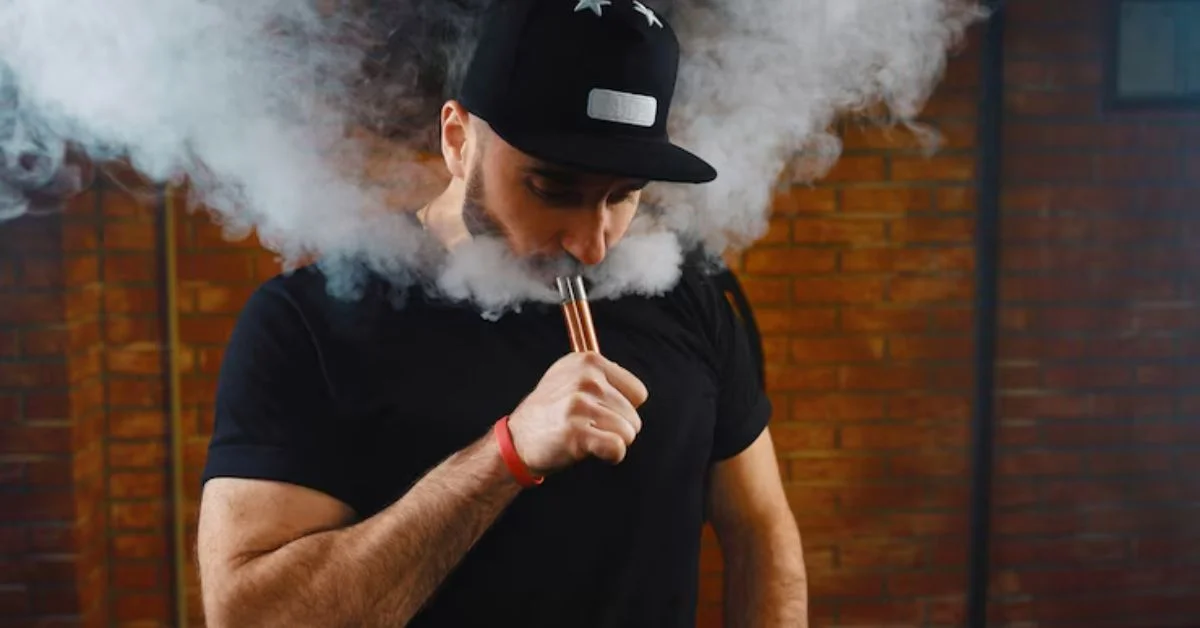In the swirling fog of an industry that shifts with every legislative bill, youth trend, and technological upgrade, few products have ignited as much conversation as Cali Clear. Widely sold across convenience stores, vape shops, and online marketplaces, Cali Clear disposable vapes have become a talking point not only among users but also among regulators, healthcare experts, and sociologists tracking 21st-century substance use.
This article takes a journalistic deep dive—an unflinching look at the product, the culture, and the complexity of what Cali Clear represents in 2025. Modeled after the investigative and balanced tone of The New York Times, this is not an endorsement nor a vilification—it is a close examination of facts, trends, and implications.
What is Cali Clear?
Cali Clear is a brand of disposable vape products that have gained popularity in the U.S. and internationally for their sleek design, bold flavors, and accessibility. Characterized by their high nicotine concentration and colorful packaging, these vapes cater primarily to young adults and transitioning smokers looking for convenience.
Each Cali Clear device is designed for single-use, meaning it comes pre-filled and pre-charged with no refill or recharge capability. Once the e-liquid runs out or the battery dies, the unit is meant to be discarded. These devices often feature nicotine salts (rather than freebase nicotine), enabling smoother inhalation at higher doses.
Design and Product Line
Cali Clear’s product strategy mirrors that of many consumer-focused tech brands: simplicity, aesthetic appeal, and variety. Their devices are pocket-sized, lightweight, and come in pastel or neon colorways that echo Gen Z fashion palettes. Each unit is clearly labeled with flavor and puff count—ranging from 2000 to 8000 puffs per device.
Popular flavors include:
- Blue Razz Ice
- Watermelon Gummy
- Pineapple Coconut
- Mango Peach
- Aloe Grape
Many products use synthetic nicotine—lab-created rather than tobacco-derived—which appeals to users seeking a cleaner image, although the health risks remain comparable.
The Appeal of Disposable Vapes
To understand the rise of Cali Clear, one must first understand the appeal of disposable vapes more broadly:
- Accessibility: No learning curve, no maintenance.
- Discretion: Odorless and smoke-free, they’re easy to use in public.
- Flavor Options: A candy store of sensations, tailored to individual taste.
- Cost: Lower upfront cost than refillable systems, though more expensive over time.
Disposable vapes, like Cali Clear, are marketed as convenient alternatives for adult smokers but have clearly captured the attention of a younger demographic.
Who Is Using Cali Clear?
Proprietary research and surveys from public health bodies suggest a few demographic trends:
- Age Group: Predominantly 18–28-year-olds.
- Geography: Urban and suburban centers, especially in U.S. states with lax retail oversight.
- Psychographics: Users interested in wellness culture but also social experimentation.
While Cali Clear claims to market exclusively to adults, the aesthetics, naming conventions, and retail placements often suggest otherwise. This tension is part of an ongoing conversation about ethical marketing in the vaping industry.
Regulation and Legal Ambiguity
The Food and Drug Administration (FDA) in the U.S. has been locked in an evolving battle with vape manufacturers over youth marketing, safety standards, and product approval. As of 2025, disposable vape products like Cali Clear sit in a legal grey zone.
While some local jurisdictions have enacted flavor bans or retailer crackdowns, national enforcement remains inconsistent. Companies circumvent restrictions by tweaking chemical formulations or exploiting labeling loopholes.
Internationally, regulation is mixed:
- UK: Legal but increasingly restricted in terms of flavors and packaging.
- Australia: Prescription-only model.
- Canada: Legal with packaging warnings and advertising restrictions.
Cali Clear operates in this murky space, often riding waves of regulatory uncertainty that allow rapid expansion followed by sharp contraction.
Health Concerns and Scientific Studies
Cali Clear, like most modern vape products, remains under scientific scrutiny. The health impacts of long-term vaping—particularly high-nicotine, flavored disposables—are not yet fully known.
What researchers do know:
- Nicotine salts can deliver stronger hits with fewer harsh sensations.
- Flavored vapes may pose respiratory risks due to synthetic compounds.
- High nicotine content may heighten addiction, particularly in adolescents.
A 2024 study from the University of California indicated that frequent use of disposable vapes elevated markers for lung inflammation, though not to the same extent as cigarette smoke. However, they noted that cumulative exposure effects may only become evident after years of use.
Social and Cultural Factors
Vaping is more than an act of consumption—it’s a social signal. In urban centers, vape use is often integrated into social rituals, replacing traditional cigarettes as a shared activity in clubs, concerts, and coffee shops.
Cali Clear’s marketing—intentionally or not—reflects this shift. It positions vaping as:
- An accessory to personal style
- A conversation starter
- A lifestyle indicator of being trend-aware but casually rebellious
Platforms like TikTok and Instagram are replete with aesthetic vape videos, many featuring Cali Clear products. Influencers flaunt coordinated outfits and color-matched devices, blending fashion and vapor into a seamless visual narrative.
Environmental Considerations
A growing critique of the disposable vape market is its environmental toll. Each Cali Clear device contributes to the expanding stream of e-waste. Containing lithium-ion batteries, plastic casings, and residual nicotine, these devices are not recyclable through standard means.
Environmental watchdogs and sustainability advocates have begun pressing for:
- Manufacturer-led take-back programs
- Biodegradable designs
- Stricter packaging waste regulations
As of mid-2025, few major disposable vape brands have addressed these concerns meaningfully, though pressure continues to mount.
Black Market and Counterfeit Products
With popularity comes imitation. Cali Clear products have become a target for counterfeiters, with fake versions flooding online marketplaces and corner stores.
These imitations often:
- Lack quality control
- Contain unregulated chemicals
- Have inconsistent nicotine levels
Consumers are advised to verify purchases through authorized retailers. However, enforcement remains difficult, especially when e-commerce platforms prioritize volume over verification.
Trends in 2025: The Evolution of Disposable Vaping
Cali Clear’s success cannot be divorced from broader trends reshaping the vaping landscape:
- Hybrid Flavors: Combining sweet, sour, and cooling sensations in single devices.
- Rechargeable-Disposable Hybrids: Devices with extended puff counts and USB-C charging.
- Smart Vapes: Integrated with apps to track usage or restrict access.
- Cannabinoid Integration: Some products now blend nicotine with CBD or THC, where legal.
Cali Clear, for its part, is reportedly working on a smart-lock device aimed at age verification through mobile pairing—though no launch date has been confirmed.
Public Health Campaigns and School Policies
In response to rising use, particularly among teens, public health agencies have escalated counter-marketing efforts. Campaigns highlight addiction risks, peer pressure dynamics, and the deceptive nature of fruity flavors.
School districts across several states now incorporate anti-vaping curricula, while others have installed vape detectors in restrooms and locker rooms.
Ethical Considerations and Industry Responsibility
As with any profitable product that may harm its users, ethical concerns loom large. Should manufacturers like Cali Clear:
- Be required to disclose all ingredients?
- Be financially responsible for public health consequences?
- Fund cessation programs?
Currently, most operate under only minimal accountability. Advocates are calling for expanded regulation similar to that imposed on alcohol and tobacco industries.
Conclusion: The Future of Cali Clear
Cali Clear, in many ways, represents the contradictions of modern consumerism—convenient but wasteful, stylish but addictive, novel but unstudied. As the public’s understanding of vaping continues to evolve, so too will the scrutiny of products like Cali Clear.
For users, the decision to engage with such products remains deeply personal. Some use Cali Clear as a bridge from traditional cigarettes. Others see it as an expression of identity. Many, especially younger users, may not fully understand the risks.
As legislators, educators, parents, and consumers grapple with these questions, one truth is evident: Cali Clear is not just a product—it is a cultural moment, crystallized in vapor and wrapped in ambiguity.
Its trajectory over the next few years will likely serve as a barometer for how society balances freedom of choice with public health, and how youth culture interacts with corporate innovation.
Whether that path leads toward regulation, reinvention, or restriction, Cali Clear is no longer just another vape on the shelf. It is a lens through which to view the complexities of health, identity, and responsibility in the 21st century.
For more information, click here.









